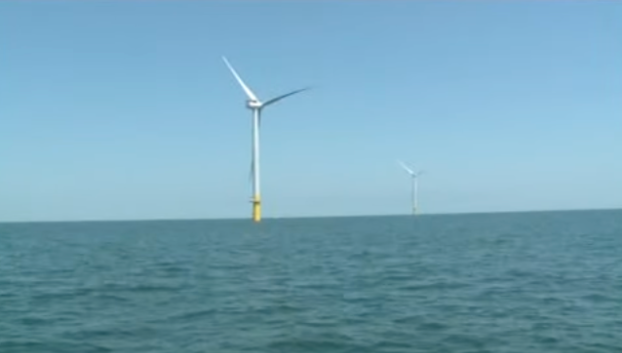News
With Trump’s Victory, the Clean Energy Industry is Feeling the Heat

Source: YouTube
The recent presidential victory of Donald Trump has shaken the clean energy industry, as investors brace for potential policy changes that could impact renewable energy projects across the United States. Throughout his campaign, Trump has signaled his intent to prioritize fossil fuels, going as far as to promise a rollback on offshore wind projects and federal funding for clean energy initiatives under the Inflation Reduction Act (IRA). Renewable stocks quickly felt the impact, with significant drops in solar and wind energy shares. However, despite the initial shock, some industry veterans believe that Trump’s promises may be more rhetoric than reality.
Immediate Market Impact on the Clean Energy Industry
Upon the announcement of Trump’s election win, renewable energy stocks experienced a steep decline. The iShares Global Clean Energy ETF (ICLN) saw a weekly loss of 7%, and the Invesco Solar ETF (TAN) dropped by 10%. Major renewable energy companies like First Solar and NextEra Energy also suffered declines as investors feared a slowdown in the transition to renewable energy. According to Raymond James’ managing director Pavel Molchanov, these market reactions reflect investor anxiety more than a likely policy shift, noting, “It’s important to differentiate between campaign rhetoric and actual reality of governing.”
Experts highlight that clean energy tax credits and subsidies, such as those in the IRA, are entrenched in states that depend on them for jobs and economic growth. Analysts like Ed Hirs of the University of Houston argue that rolling back these incentives could provoke backlash even from Republican allies. More than a dozen House Republicans recently sent a letter urging Speaker Mike Johnson to protect these incentives due to their economic benefits, particularly in swing states like Georgia, Nevada, and Arizona.
Long-Term Realities and Potential Limits
The clean energy sector’s growth over recent years has not been without challenges, including rising interest rates and supply chain issues. Still, U.S. renewable energy sources, including solar and wind, have been bolstered by technological advances and declining costs, making them the cheapest forms of new electricity production. According to Lazard, solar and onshore wind projects remain highly competitive. This competitive edge, combined with strong incentives from the IRA, suggests that a Trump administration might face difficulties in fully dismantling clean energy policies.
Several industry executives express confidence that the economic benefits of clean energy investment will continue, regardless of potential policy shifts. Eric Dresselhuys, CEO of ESS, a battery storage manufacturer, noted optimism for growth under Trump’s administration, suggesting that the sector’s demand remains solid. Additionally, tech giants requiring energy for AI and data centers continue to support renewable projects, valuing carbon-neutral operations.
Campaign Promises Versus Governing Reality
Trump’s promises to “unleash” fossil fuels, including increasing oil and gas production and imposing tariffs on clean energy imports, have raised concerns within the renewable sector. Chao Yan, CEO of Princeton NuEnergy, warns that tariffs on imported solar components and steel could increase production costs, further straining the industry. Trump’s intentions to end offshore wind development and possibly cut grants for clean energy projects could also slow certain areas of growth, though many analysts argue these steps would have limited reach given the extensive private and state-driven investments already underway.
It remains unclear how aggressively Trump will follow through on these campaign pledges, especially considering that federal clean energy incentives benefit many conservative-leaning states. Previous analysis by Raymond James reveals that during Trump’s first term, despite his pro-oil stance, solar and wind installations grew by 32% and 69%, respectively. This trend suggests that while Trump’s rhetoric may be pointedly against clean energy, his administration’s impact on the actual industry could be more nuanced.
What Lies Ahead for Clean Energy?
With Trump’s victory, the clean energy industry is entering a period of uncertainty. Analysts expect market volatility as developers await clarity on potential regulatory shifts. Some executives, like Heliene’s CEO Martin Pochtaruk, have delayed multimillion-dollar projects until they gain insight into the new administration’s stance on renewable energy.
However, many experts, including those at Wood Mackenzie, anticipate that clean energy investment will continue, albeit potentially at a slower pace. Even if the Trump administration imposes restrictions on clean energy incentives, the demand for renewable energy in the U.S. is expected to persist, driven by state policies, technological advancements, and the ongoing shift towards electrification.
As Trump returns to office, the clean energy sector faces significant challenges but remains resilient. With the economy and investor interests increasingly tied to sustainable energy, it’s likely that the clean energy boom will continue—whether or not the White House fully supports it.
How will Trump's policies affect the clean energy industry’s momentum in America? Tell us what you think is in store for environmental firms.



